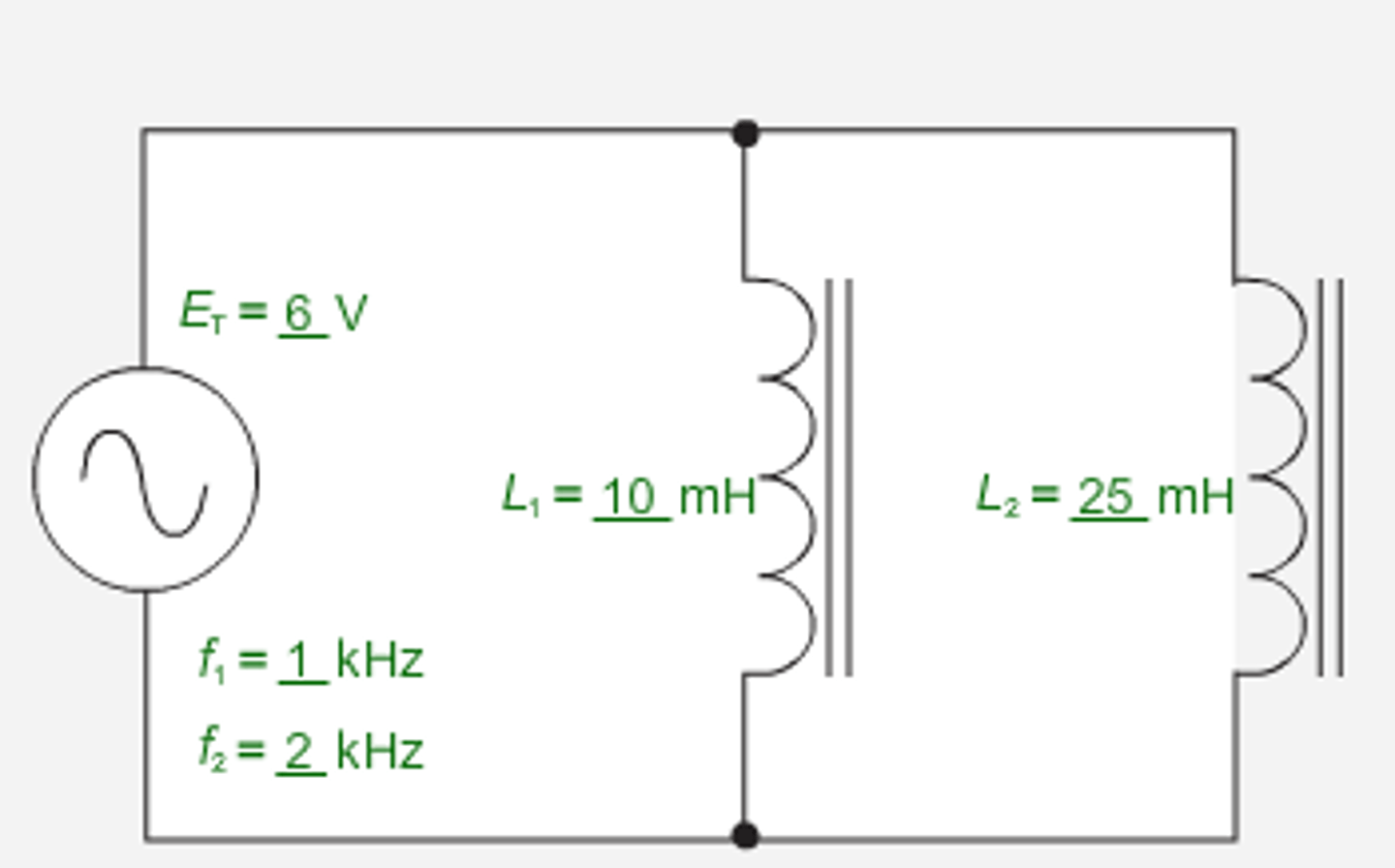Lesson 2: Working with Inductors that are in Series and/or Parallel
1/13
There's no tags or description
Looks like no tags are added yet.
Name | Mastery | Learn | Test | Matching | Spaced |
|---|
No study sessions yet.
14 Terms
LT=L1+L2+L3 is the formula for finding the total inductance of a circuit when there is more than one inductor connected in series.
True
The total inductance when there is more than one inductor connected in parallel can be determined by the formula: LT=1/(1/L1)+(1/L2)+(1/L3)
True
The total inductance of series and parallel inductors in a circuit is calculated the same way as the total resistance is calculated for series and parallel resistors in a circuit.
True
In order to find the total inductive reactance in a series or parallel circuit containing more than one inductor, the same method must be used that was used to find inductance.
True
In the circuit shown, three coils are placed in series. The total inductive reactance for this circuit is 150 ohms. Inductors L1 and L2 have inductive reactances of 60 ohms each. What is the inductive reactance of L3?
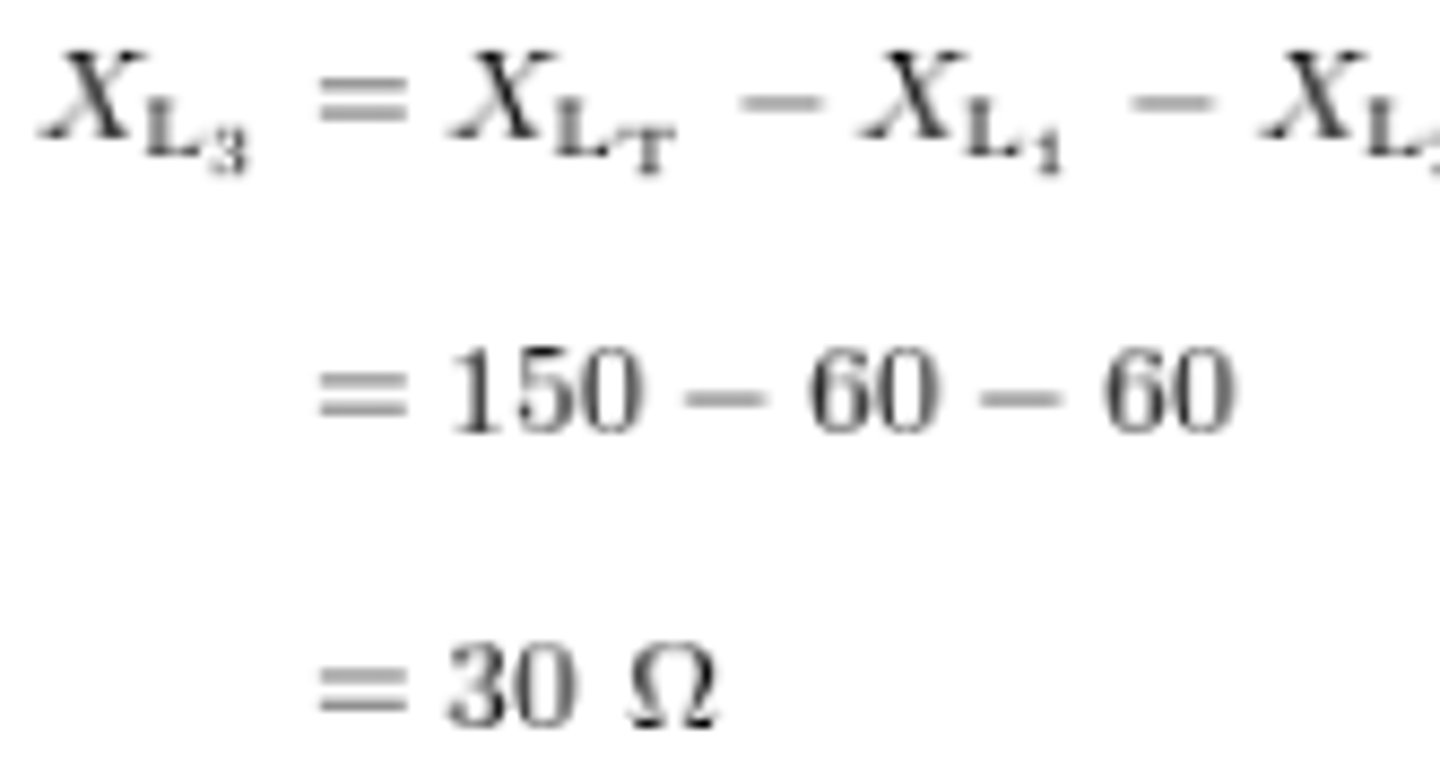
Three coils with inductance values of 250 millihenries, 3.5 henries, and 600 millihenries are connected in series. What is the total inductance? (Round the FINAL answer to two decimal places of the unit shown.).

Three coils with inductance values of 250 millihenries, 3.5 henries, and 600 millihenries are connected in series. A 24-volt, 400-hertz signal is applied to the circuit. What is the current? (Round the FINAL answer to four decimal places.)

Three coils with inductance values of 250 millihenries, 3.5 henries, and 600 millihenries are connected in series. A 24-volt, 30-hertz signal is applied to the circuit. What is the current? (Round the FINAL answer to three decimal places.)
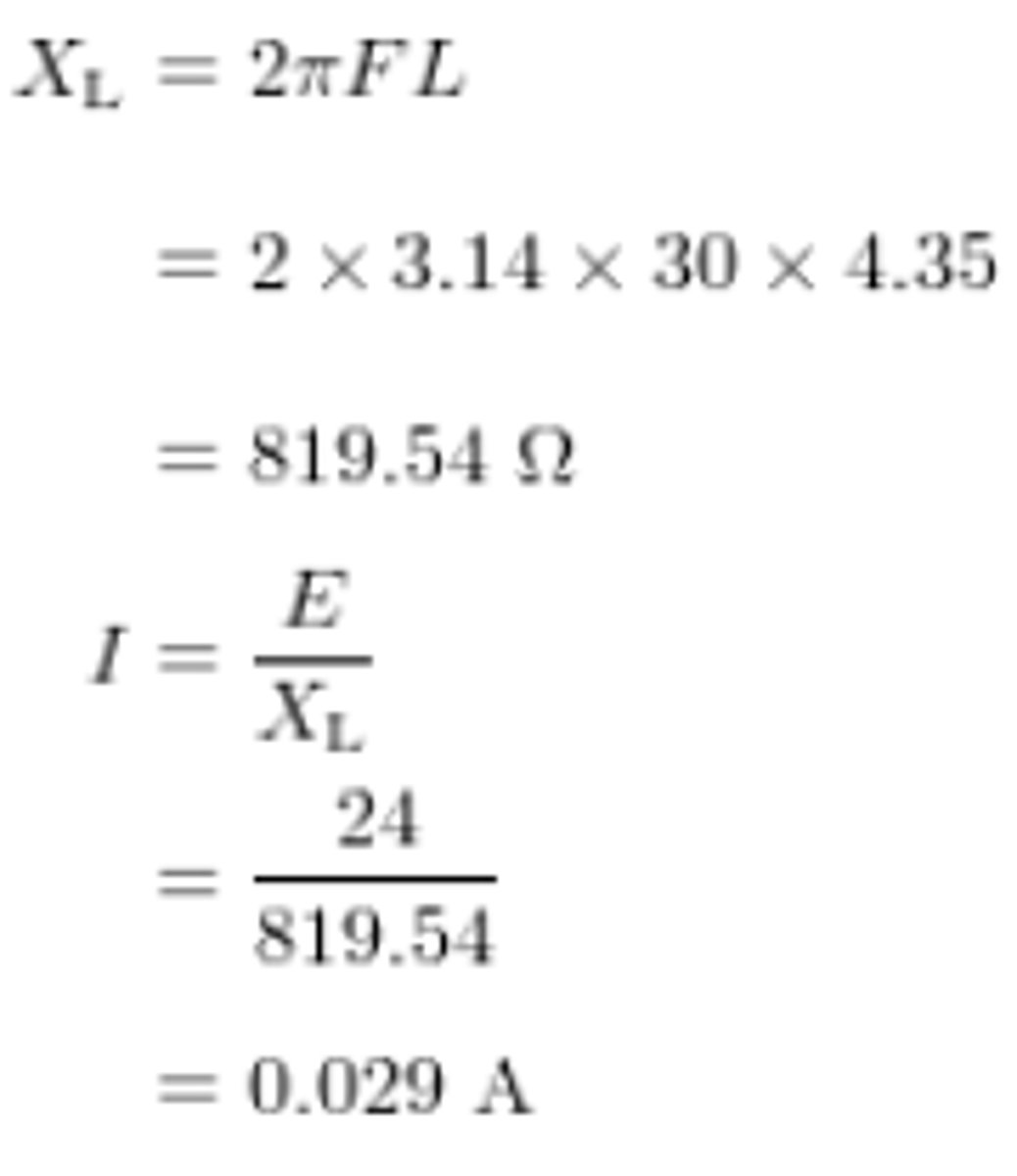
Adding additional inductors in series in a circuit that already contains inductors will ? the total inductive reactance of the circuit.
increase
Adding additional inductors in parallel in a circuit that already contains inductors will ? the total inductive reactance of the circuit.
decrease
LT= 3.33H XL2=31416Ω
XL1=62832Ω XLT=20944Ω
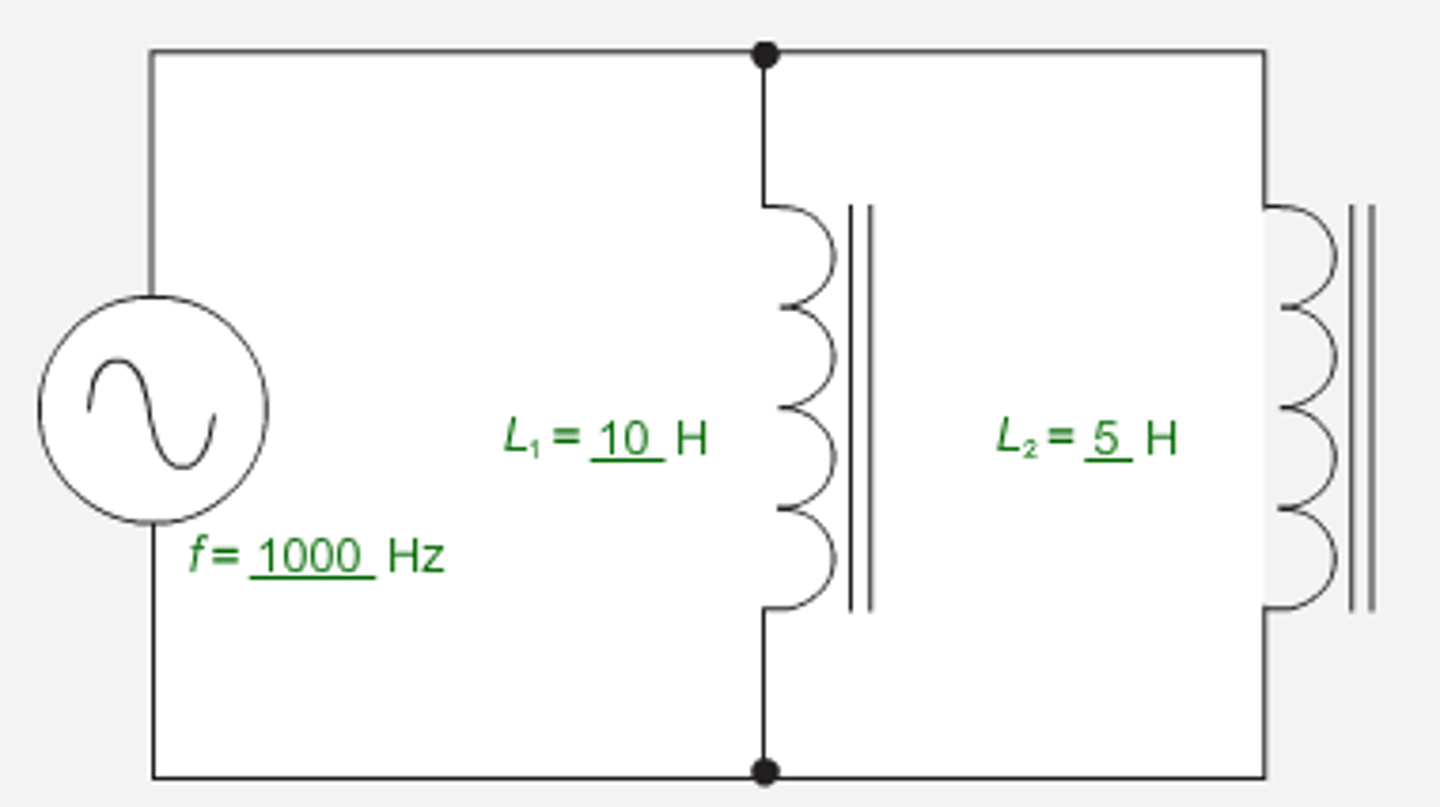
XLT@60Hz=109Ω XLT@50Hz=91Ω
LT=289.373mH IT@50Hz=2.42A
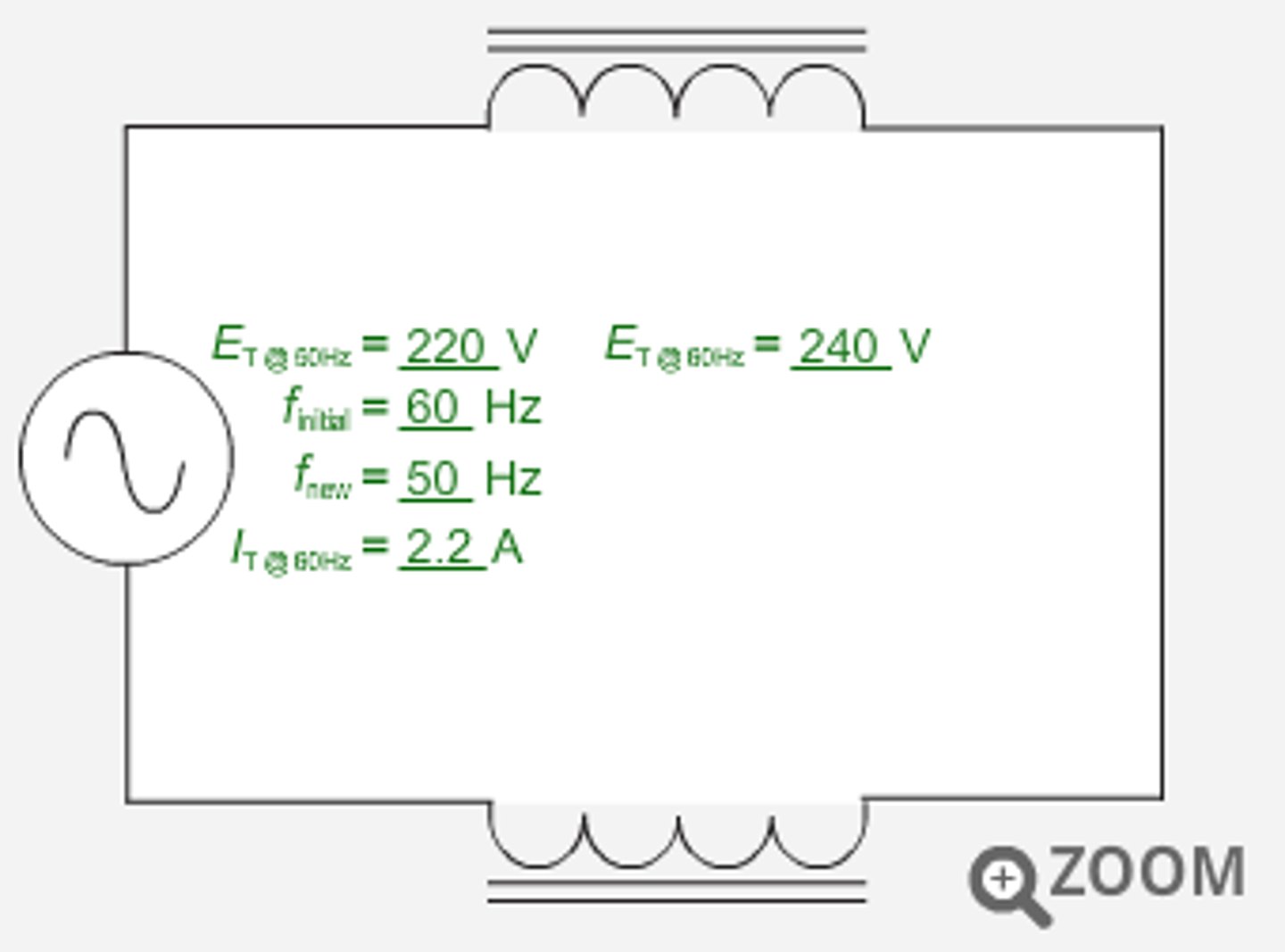
IT@1KHz=27.28mA
IT@2KHz=13.64mA

IT@1KHz=133.69mA
IT@2KHz=66.85mA
